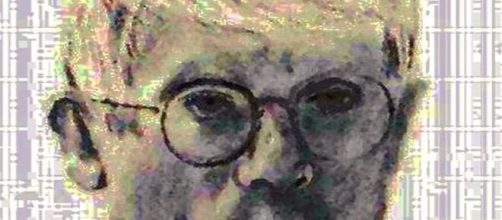Starting an argument in these contentious times is a bad idea. But British pop painter David Hockney went at it in The Art Newspaper last week. His argument? “Abstraction in art has run its course.”
What is it?
But it’s Hockney’s attitude toward abstract art that ran its course – back in 1877, to be exact. That’s when British art critic John Ruskin panned American artist James Whistler’s Nocturn series that conjured night. He accused him of “flinging a pot of paint in the public’s face.”
Whistler took Ruskin to court, suing him for libel.
And for two days, witnesses testified to the value of an abstract painting and denied Ruskin’s view that the style lacked “moral force.”
Silly question
Ruskin’s lawyer questioned Whistler about the length of time it took him to “knock off” his Nocturnes. When he answered a day or so, the lawyer jeered saying that two days’ work is not worth the money he charges for the paintings. Whistler famously pointed out that his price was for “the knowledge I have gained in work of a lifetime.”
Whistler won his case. Ruskin was so upset by the verdict that he resigned his post at Oxford University in protest. So, it's fair to say that Hockney is late to the abstract art argument by at least 144 years.
And given what Hockney wrote in The Art Newspaper, saying, in effect, that he wants abstract art gone, it’s clear that he never really liked the style in the first place:
“Giacometti derided abstraction as ‘the art of the handkerchief,’” Hockney agrees.
“That’s what the illustration looked like to me, nothing more.”
"Nothing more." Really, David? I grant you that abstract painters have little interest in the visible world, preferring to focus on their inner world. But this is far from nothing. It’s the world of thought and feeling, possibly the be-all and end-all of everything.
A forever style
Abstract art, then, doesn’t come with an expiration date. Piet Mondrian wrote some thousand words about the value of painting without recognizable objects. Isn’t that what music also does – create sounds apart from nature, unheard in the real world?
And, just as abstract art keeps the seeable world out of the picture by using its own language, music also keeps the sounds of the world out of its songs by using its own language, too.
Hockney needs to ask himself why composers of music are entitled to be freer than painters.
In contrast
Unlike Hockney, who is known for his high-colored pictures of swimming pools in California, fellow British painter Ben Nicholson not only rejected the imitation of the natural world, but he also rejected natural colors. He often went completely monochrome.
Maybe the best way to end this argument is to cite an action that Nicholson’s mother was known for. Disdaining high-flown talk about art, the 1990 edition “Anecdotes of Modern Art” notes that she would take to scrubbing the kitchen table on hearing such talk.


